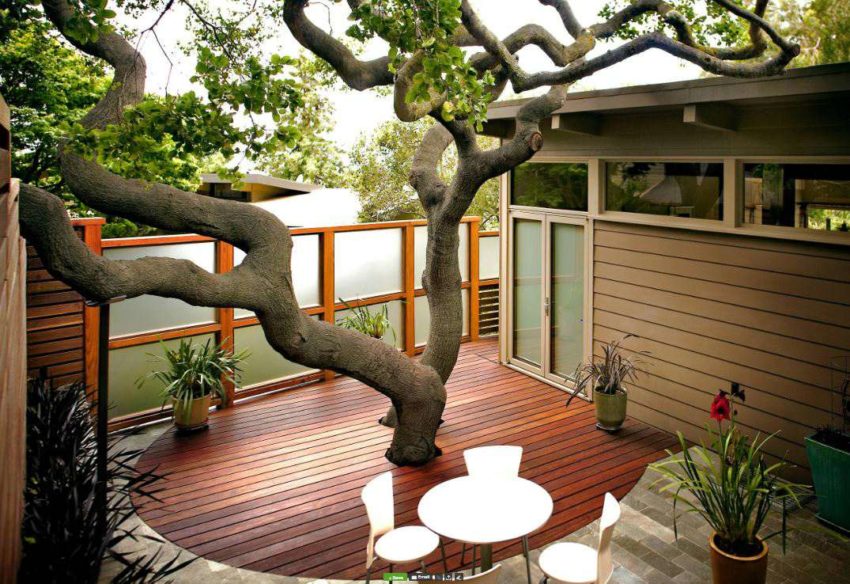Landscaping around trees can be a daunting task. There are so many things to consider: what plants should you use? What should you avoid? How do you make sure the tree isn’t damaged in any way? In this blog post, we will answer all of those questions and more! We’ll give you tips on how to make the process easier and help you avoid common mistakes. So read on for all the information you need to landscape around trees like a pro!
Keep it simple: Yes, we know that this isn’t much of an advice. As with anything that you do when it comes to trees and landscaping or even something entirely different, it’s best to keep things simple. The problems start when homeowners develop too many landscaping ideas and don’t know how best to execute them. Executing too many ideas at once can lead to a hodgepodge of plants that don’t go together, making it much more difficult to take care of. So our first tip is to start small and build up from there. You can always add more later on!
Choose the right plants: This might seem obvious, but you’d be surprised how many people choose plants without thinking about it. When landscaping around trees, you must ensure that the plants you choose are compatible with the tree. For example, if you have a maple tree, you wouldn’t want to plant ivy around it because ivy is a vine and will eventually strangle the tree. Instead, you might want to choose plants known to be good companions for maples, such as ferns.
Avoid damaging the tree: This is probably the most important tip on this list. When landscaping around trees, it’s important to avoid damaging the tree roots in any way. If you have to dig to plant something, make sure you’re not too close to the tree trunk, and use a shovel or spade with a blunt edge. You don’t want to cut into any roots accidentally!
Ground-cover Mono-culture: Ground-cover Mono-culture is a way of landscaping that involves planting one type of ground-cover plant in large areas. This is a great way to add color and interest to your landscape, but choosing the right plant for the job is important. Some ground-cover plants can be very invasive, so make sure you do your research before you commit to any one species. If you like the idea of a ground-cover mono-culture, consider something along the lines of periwinkle or myrtle, which are non-invasive ground-cover plants.
Paint a scene: When thinking of landscaping, think of a scene. How would you like your back garden to look in its entirety? Think of the entire picture, your tree included. Think where everything will fall into place. One of the best ways to do this is by sketching your plans. This will give you a better understanding of the space you have to work with, and it’ll be easier to find plants that fit into the scene you have in mind. And if you are tech-savvy, you can always whip up an illustrative design of your backyard to have a complete picture.

Using sun-loving companion plants: Most people think that when landscaping around trees, it’s always a good idea to use plants that love shades. While this might be the case for some trees, it’s not always the best idea. If you’re landscaping around a tree that loves the sun, then using sun-loving companion plants is a great way to add color and interest to your landscape. Make sure you choose plants that won’t eventually outgrow and overwhelm your tree!
Be bold about it: Be confident in your choices when landscaping around trees. If you’re not sure about something, ask a professional. But don’t be afraid to experiment and go with what you think looks good. After all, it’s your yard and your tree!
Using a professional: This is probably the best tip on this list. If you’re not confident in your ability to landscape around trees, it’s always a good idea to hire a professional. They will be able to help you choose the right plants, and they’ll also be able to give you advice on how to take care of them. This is especially important if you’re unsure about something or worried that you might damage the tree roots. A professional can also tell you if it’s better to landscape around the tree or if the tree needs cutting. Hiring a tree professional is always a good investment; it’ll save you time and effort in the long run.
When landscaping around trees, the clearer you are, the better. If you have a plan and specific goals, finding plants that fit into the scene you’re trying to create will be much easier. And if you’re unsure about something, don’t hesitate to ask a professional for help! With these tips in mind, you should be well on creating a beautiful landscape around your tree.
If you want more information about landscaping around trees or need help finding the right plants for your landscape, consider talking to your local nursery or landscape company. They’ll be able to give you even more tips and advice, and they might even have some plants that are perfect for your landscape! Whatever route you decide to go, remember that landscaping around trees can be a fun and rewarding experience. So get out there and start planning your landscape today!

